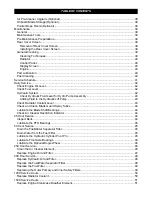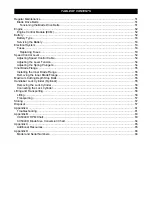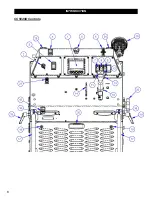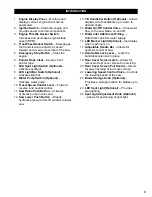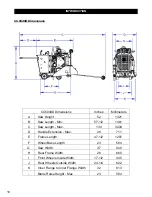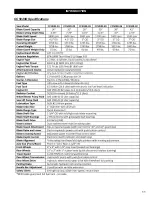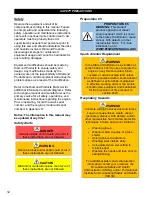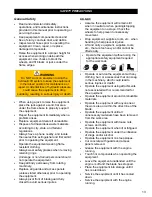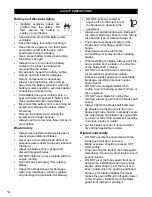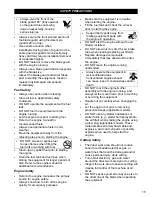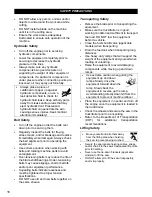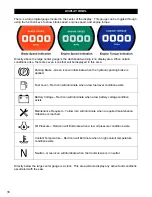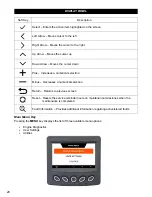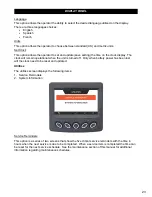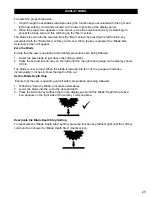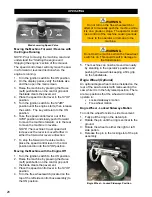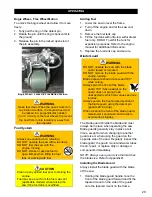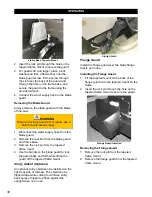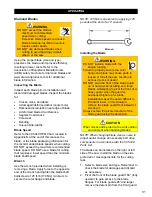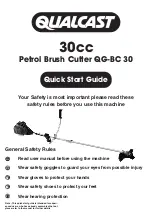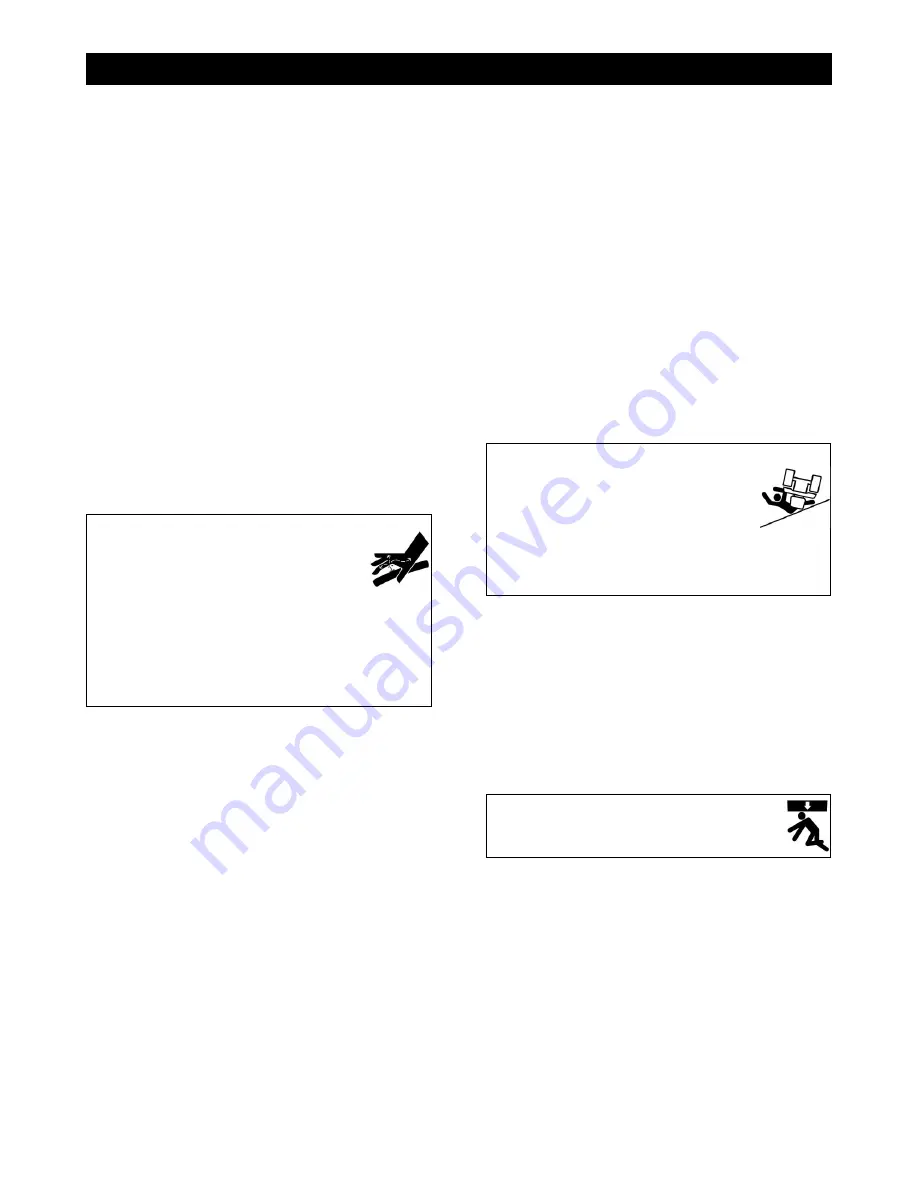
SAFETY PRECAUTIONS
•
DO NOT allow any person, animal, and/or
objects in and around the work area while
cutting.
•
DO NOT install a blade on the machine
until it is in the cutting area.
•
Ensure the work area is adequately
illuminated to ensure safe operation of the
machine.
Hydraulic Safety
•
Turn off the engine prior to servicing
hydraulic components.
•
Lower the equipment completely prior to
servicing to decrease the hydraulic
pressure in the lines.
•
Always make sure any hydraulic
components being serviced are not
supporting the weight of other equipment
components. If a particular component is
under pressure when connection points are
loosened, oil may spray out forcefully.
•
Always place a piece of
cardboard or paper up against
hydraulic components, or use a
leak detection fluid to check for
hydraulic fluid leaks. Keep all body parts
away from leaks and/or areas that may
eject hydraulic fluid. Pressurized
hydraulic fluid can penetrate the skin,
causing serious injuries. Seek medical
attention immediately!
Belt Safety
•
Turn off the engine and let the belts cool
down prior to servicing them.
•
Regularly inspect the belts for fraying,
stress cracks, and/or breakage and replace
immediately when damaged. Always check
the belt alignment prior to operating the
equipment.
•
Use extreme caution when working with
belts and rotating machine parts to avoid
entanglement.
•
Over-tensioning belts may reduce the life of
the blade shaft bearings. Under-tensioning
belts may cause slippage, shorter belt life,
and/or poor equipment performance.
•
Squealing belts indicate looseness and
must be tightened to proper tension
specifications.
•
DO NOT use old and new belts together on
the same sheave
.
Transporting Safety
•
Remove the blade prior to transporting the
equipment.
•
Make sure the truck/trailer is in good,
working condition and sufficient to transport
the load. DO NOT tow the equipment
behind a vehicle.
•
Close the fuel shutoff valve (applicable
models) when transporting.
•
Drain the fuel tank when transporting long
distances.
•
Use heavy-duty ramps that will support the
weight of the equipment and yourself when
loading or unloading.
•
Raise the equipment to avoid damaging
components while moving up and down
ramps.
•
Use extreme caution when guiding the
equipment up and down
ramps. Slowly drive the
equipment forward down the
ramp. Slowly back the
equipment in reverse up the ramp.
Avoid standing directly downhill from the
equipment to prevent machine rollover
.
•
Place the equipment in neutral and turn off
the engine once the equipment is loaded in
the truck/trailer.
•
Chock the wheels and secure the saw in the
truck/trailer prior to transporting.
•
Refer to the Department of Transportation
(DOT)
for
additional
transportation
recommendations.
Lifting Safety
•
Move yourself and all others away
from the lifting area when hoisting
the saw to prevent being crushed.
•
Secure the appropriate hoisting cables, straps,
and/or chains to the saw’s designated lift points
prior to hoisting.
•
Never use the tie-down brackets (applicable
models) to lift the saw.
•
DO NOT attempt to lift the saw irresponsibly
and/or improperly.
16
Summary of Contents for CC5049D
Page 1: ...CORE CUT OPERATOR S MANUAL CC5049D Rev 21 00 Part 1802721...
Page 2: ......
Page 8: ...INTRODUCTION CC5049D Controls 8...
Page 11: ...INTRODUCTION CC5049D Specifications 11...
Page 58: ...REFERENCES 58...
Page 59: ...REFERENCES 59...
Page 60: ...REFERENCES 60...
Page 67: ......




